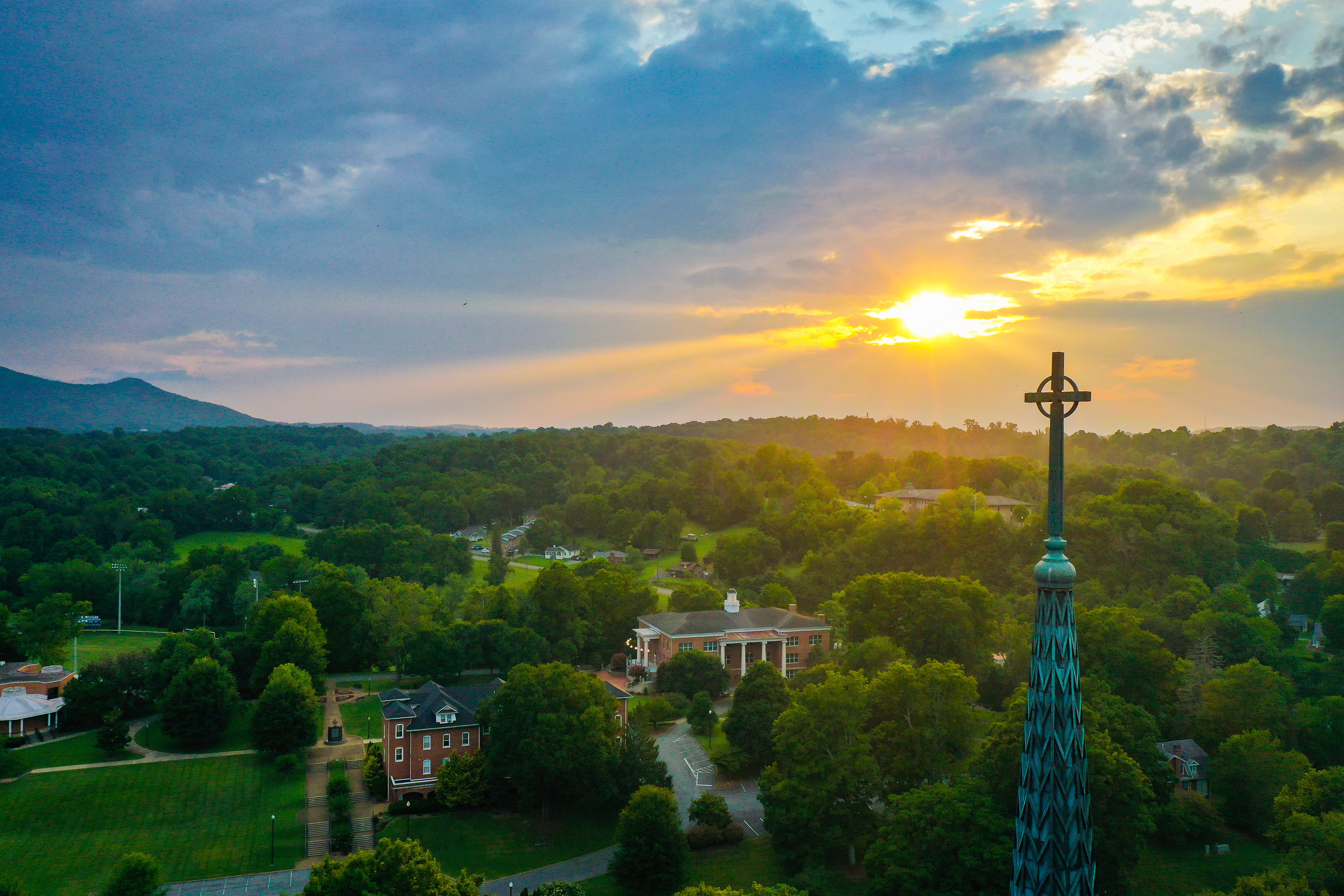Campus Ministry
As our vision statement proclaims, Milligan is a place where Jesus Christ is exalted. We believe God has a unique plan for each of our lives—for our hearts as well as our minds. Together we can form a new generation of Christian leaders who are intellectually and spiritually prepared to change lives and shape culture.
Milligan University is a Christian liberal arts university that encourages our students to be thinking and acting Christians. Part of the educational process is to provide students with a working knowledge of diverse subjects and viewpoints and to encourage students to think through these issues from a Christian worldview. This does not mean that Milligan University endorses all viewpoints presented but believes the presentations and resulting dialogues are important to the educational process of developing Christian servant-leaders.

Spiritual Formation Program
While at Milligan, all full-time students are expected to participate in the Spiritual Formation Program (SFP) that helps nurture the Christian spirit, character, and worldview. You’ll have a variety of opportunities to lead or participate in worship services, small groups, faith-based clubs, and service opportunities.
Campus Ministry
WORSHIP
Milligan University seeks to offer opportunities for students to honor God through worship, and to encourage each other to attitudes and actions that reflect the character of Jesus. These opportunities include regular Thursday chapel services, special events, and Vespers, an informal, student-led time of worship, teaching, and fellowship.
SMALL GROUPS
Small groups at Milligan allow students to experience genuine fellowship with other students, share corporate prayer, and study the Bible together. Campus Ministry initiates all small groups on campus with most groups organized by Vespers and FCA. A student seeking more information concerning placement or types of groups available should speak to the Campus Minister.
SERVICE OPPORTUNITIES
At Milligan, Campus Ministry seeks to prepare all of its students as members of the Church who serve each other and the world around them. Through Convocation, regular service opportunities, and mission trips, Milligan seeks to both introduce students to servant-leaders from a variety of settings, as well as challenge students to take part in current and future servant-leadership opportunities.
CLUBS & ORGANIZATIONS
Campus Ministry clubs and organizations provide students the opportunity to experience genuine fellowship around common interests by providing programming for club members and the rest of the campus community.

Regular Thursday chapel services, special events, and Vespers, an informal, student- led time of worship, teaching, and fellowship.

Students are encouraged to participate in a variety of small groups that challenge each other to grow as disciples of Jesus.

Convocation, regular service opportunities, and mission trips that challenge students to grow as servant-leaders.
Service
We believe that leadership is about service. Milligan therefore encourages students to reach out to influence lives and the world around them. Students are encouraged to become servant leaders through mission and service projects, and many classes incorporate service learning into the classroom. On short-term mission trips, in worshiping and participating in local churches, and in serving the community, Milligan students become more aware of their culture and the world in which they will minister.


LOCAL CHURCHES

STUDENT LIFE TEAM

Seeger Memorial Chapel
Seeger Memorial Chapel occupies the center of campus with its spire and 12-foot Celtic cross—192 feet above ground level—overlooking the campus. The Chapel points to the fact that the primary objective of Milligan University is to include Christian understanding and practice in all of life’s attitudes and activities.
History & Symbolism
The Chapel was dedicated November 4, 1967, and remains the most prominent building on campus. At 31,000 square feet of floor space, there is still no structure of comparable quality and magnitude in this area. The main sanctuary-auditorium seats 1,145. The George O. Walker Auditorium, located on the lower level, accommodates several hundred. The Chapel houses the University’s music program and serves the campus and community in many purposes—worship, lecture, concerts, drama, and instruction.
Structurally, the chapel features antique face brick, Indiana limestone, various grades of marble, bronze, granite, and Appalachian white oak. The structure and symbolism of the Chapel give us a sense of the significant forethought then President Dean Everest Walker put into the construction of this facility and the messages it embodies.
It is through the generosity and support of many that this facility stands today as a significant part of Milligan’s campus. The Chapel is named in memory of Mr. Ura Seeger. A native of Indiana, Mr. Seeger was the owner of several grain elevators in the Midwest and served as an Indiana state senator. An elder and Sunday school teacher at the West Lebanon (Indiana) Christian Church, Mr. Seeger financed many educational projects which now stand before the world as living memorials of a dedicated Christian life
Symbols and Stories in the Stained Glass
A distinctive feature of Seeger Memorial Chapel is symbolic art successfully employed in the Colonial design of the building. Circling the main auditorium where the walls meet the ceiling is an endless golden cord, symbolizing the eternal wisdom, goodness, and love of God.
The stained glass windows, designed and fabricated by Gordon Smith, reflect a modern development of the primitive form of this art. This style had its origins in early Christian paintings and drawings; later, it was adapted to stained glass window techniques. The artist has liberally interpreted this style in creating windows reflective of the age nearest to the New Testament, yet incorporating superior contemporary techniques, blending time into one continuing stream—always past and present and future.
The upper windows on the East portray events from the era of the law. On the West representive events from the New Testament are recorded. Each window below the balcony designates one of the twelve Apostles.
All of the windows have a symbolic border. The muted grays, lavenders, and blues of the outer border denote the Christian’s struggle against adversity. The red inner border symbolizes the intensity of the Christian’s faith since the twelve Apostles took the Word of Jesus and began to spread it through the world. The clear glass signifies the future, which Christians as dedicated followers of Jesus can see clearly through the eyes of faith.
In addition to the sanctuary windows, each of the corner windows, located in the stairs, is a symbolic representation of one of four events in the life of Christ which are unique in Him as the Son of God.
Above the Great Doors are two windows, one for Moses as the foremost prophet of Israel, one for Paul as the major Apostle to the Gentiles.
Over the proscenium arch is a mosaic keystone containing a hand, a red cross, and a kernel of wheat. The fingers of the hand spell out the ancient monogram for Jesus Christ, while the cross and wheat remind the worshipper of Jesus’ death and resurrection, as well as Jesus the bread of life. This keystone is also part of an overall design in which Jesus is presented as part of the Godhead. The Holy Spirit is represented by a mosaic of a dove, and a round, stained glass window symbolizing the glory of God the Father is set in the pediment over the main entrance door. These three images define a straight line running entirely through the building, and together they speak of God as Father, Son, and Holy Spirit.



